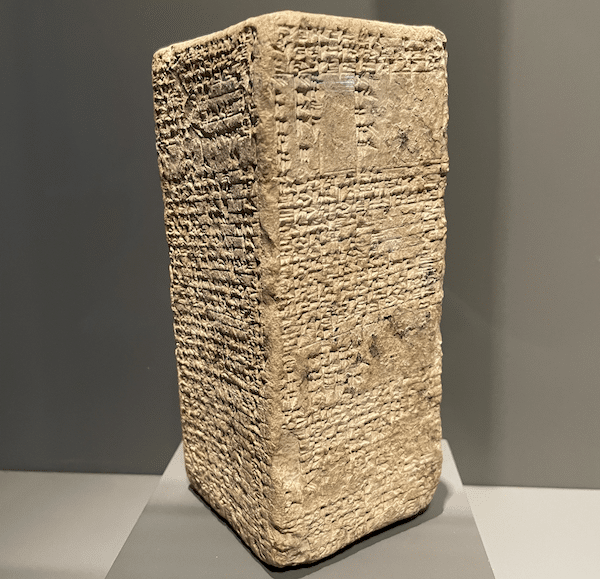Welcome to another post for History – This Week! Today Sarah Shotwell continues on our exploration of Early Civilizations and how the early Babylonian mathematical system impacts our world today.
During the History Experience last week, we learned about the history of “Mercury in Retrograde” — the periods during the year when the planet Mercury (or Nabu, as the Babylonians called him) appears to be moving backward in orbit. It was believed everything Nabu governed, such as language, writing, diplomacy, business, and travel, would be thrown into chaos! Some Babylonians avoided writing poetry, traveling, or signing contracts during this time of the year, and the Greeks believed this was when the god Hermes (Mercury, to the Romans) visited the underworld.

Mercury will go retrograde in its orbit tomorrow, September 27th! Many modern people feel this is just a superstition. Others still believe what the Babylonians did and stay vigilant until Mercury’s orbit returns to normal.
Beyond constellations and early astronomy, there are many examples of the influence of Babylonian culture in our world today. One of the major ways we notice this is through math.
Sumerian and Babylonian math used a base 60 system. 60 was the most important number in Mesopotamian math, as it is divisible by many different numbers and offers lots of opportunities for clean, simple fractions. It is such a useful number system that today, we still measure time, angles, and coordinates using the Base 60 system created by the ancient Mesopotamians!

You can practice base 60 math at home. Try the activity below!
First, divide 60 by each of these numbers.
1
2
3
4
5
6
10
12
15
20
30
60
What do you notice? Are there any patterns? Are there any integers that appear more often than others? Do you notice any prime numbers?
Examples of base 60 math in Babylonian culture:
If you multiply 60 x 6, you get 360 — like the 360 degrees of a circle!
Have you heard the term “do a 180?” This describes the movement of rotating halfway around, or can be used as a metaphor to describe changing one’s mind and taking on an opposite position. 180 is 60 X 3.
Circles were important in Mesopotamia. This is even expressed in Babylonian religion! As mentioned, the Babylonians believed in astrology, which means they thought the stars had an impact on human lives. The Babylonians observed that the stars appeared to be rotating in a giant circle around the earth, while the planets, moon, and sun travelled along through various constellations. That giant circle in the sky was named the Zodiac. It’s 360 degrees (60 x 6), and it is divided into 12 constellations (60 / 5).

What happens when you divide 360 degrees by 12 constellations? How many degrees in the sky are given to each constellation?
Do you notice anything interesting? 12 constellations, 12 months. 30 degrees per constellation, 30 days in a month! Until around 800 BCE, ancient cultures around the near east used a 360 day annual calendar — one degree per day. The math was a bit inexact though, so they eventually adjusted to a 365 day year to account for the discrepancy.
In Mesopotamian math we see lots of prime numbers such as 2, 3, and 5. The number 12 is also important. For example, there are 12 months in a year and 12 hours each for day and night. Later, Greeks would adopt aspects of Babylonian culture. This may be why there were 12 Greek Olympian gods! Can you think of any other examples in history, religion, culture, or mythology in which the number 12 is important? It might just be another example of the influence of ancient Babylon in our world!
Thank you Sarah Shotwell for this weeks post! What do you think of Babylonian math? Can you think of any other examples of Base 60 math still in use today? Share with us below!




















